Wartime clothing patterns
When clothing rationing was announced in 1941, each person could have 66 coupons per year, but this was progressively cut as the war continued. Clothing rationing didn’t end until May 1949. Many women made clothes for themselves and their family or used a dressmaker.
A Vogue blouse pattern from this time states that every pattern in their new range has been selected for coupon value. It goes on to say that when you have finished with this pattern please see that the envelope, chart and tissue is passed to salvage.
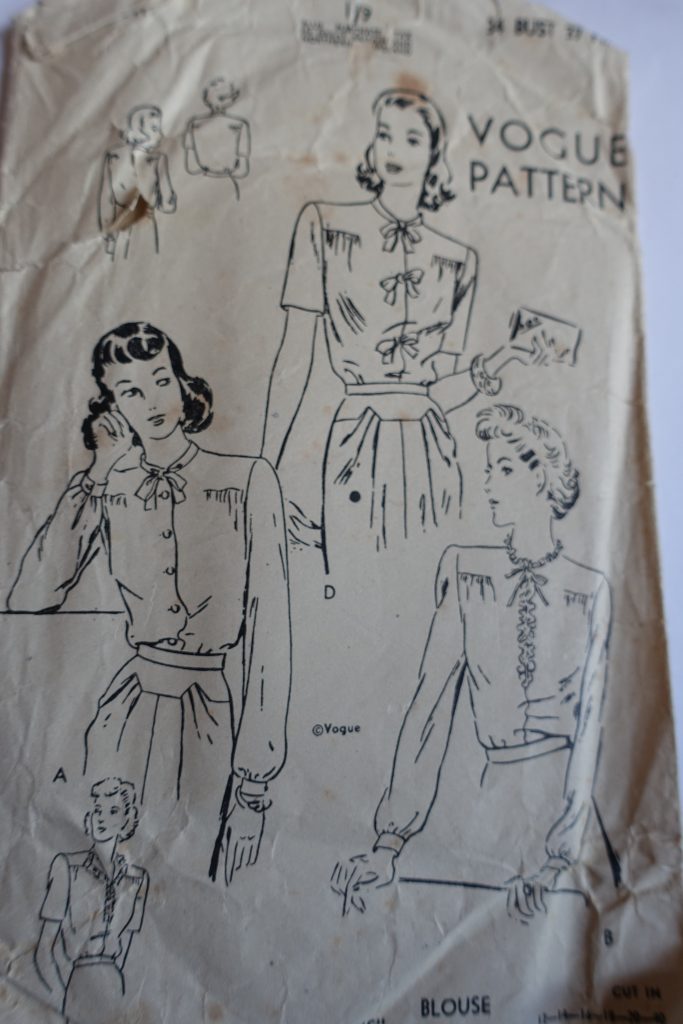
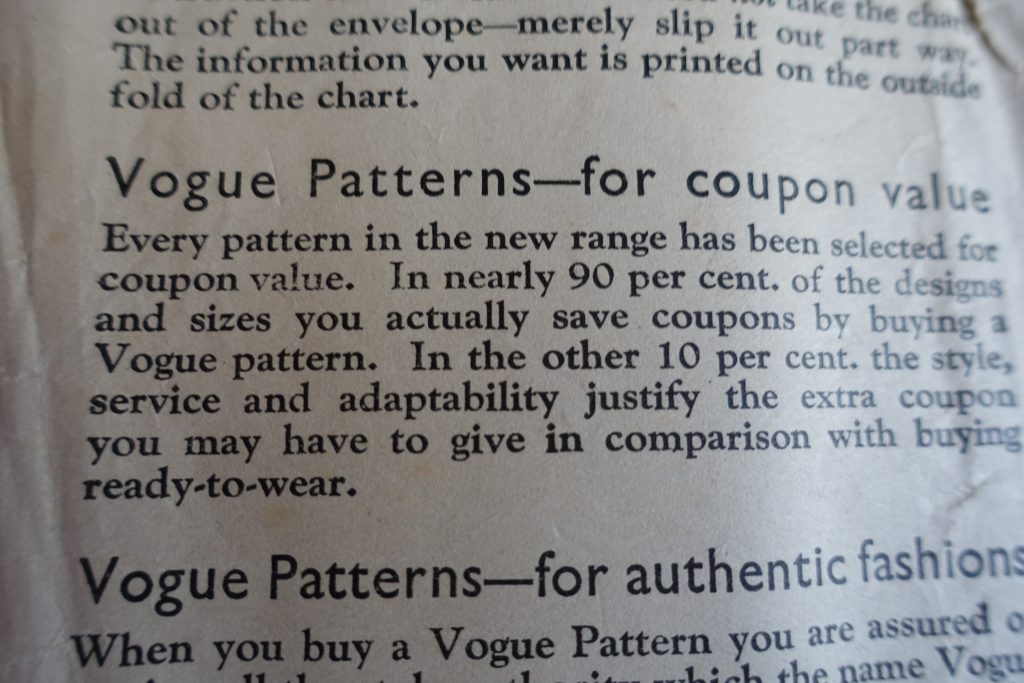
Pattern envelopes were stamped, ‘Professional Dressmakers are reminded that they must comply with the Making of Civilian Clothing (Restriction) Orders’.
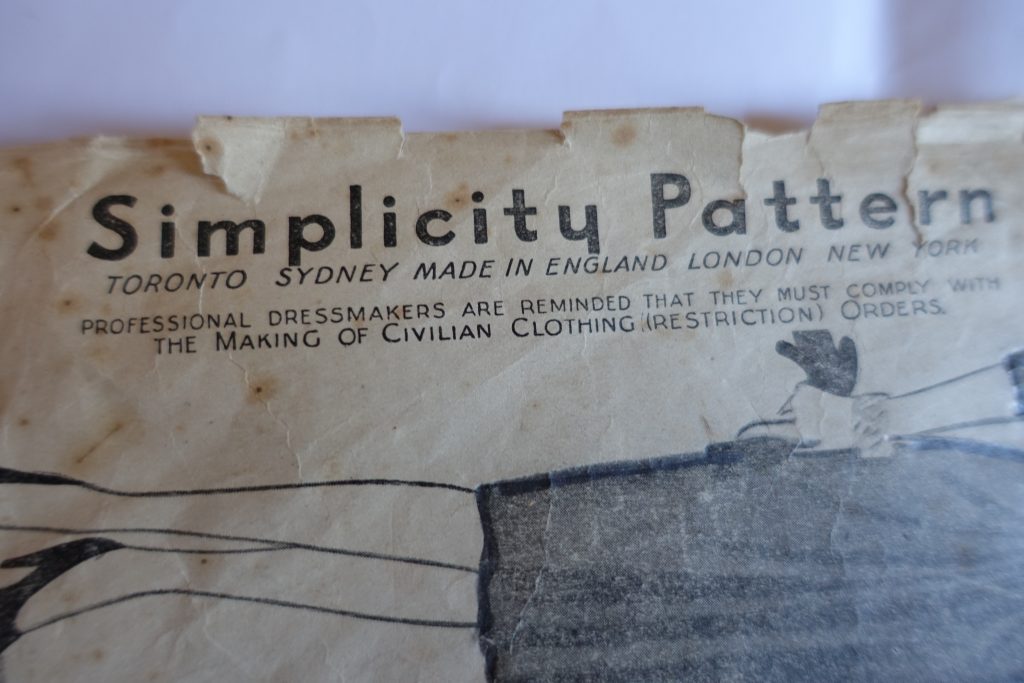
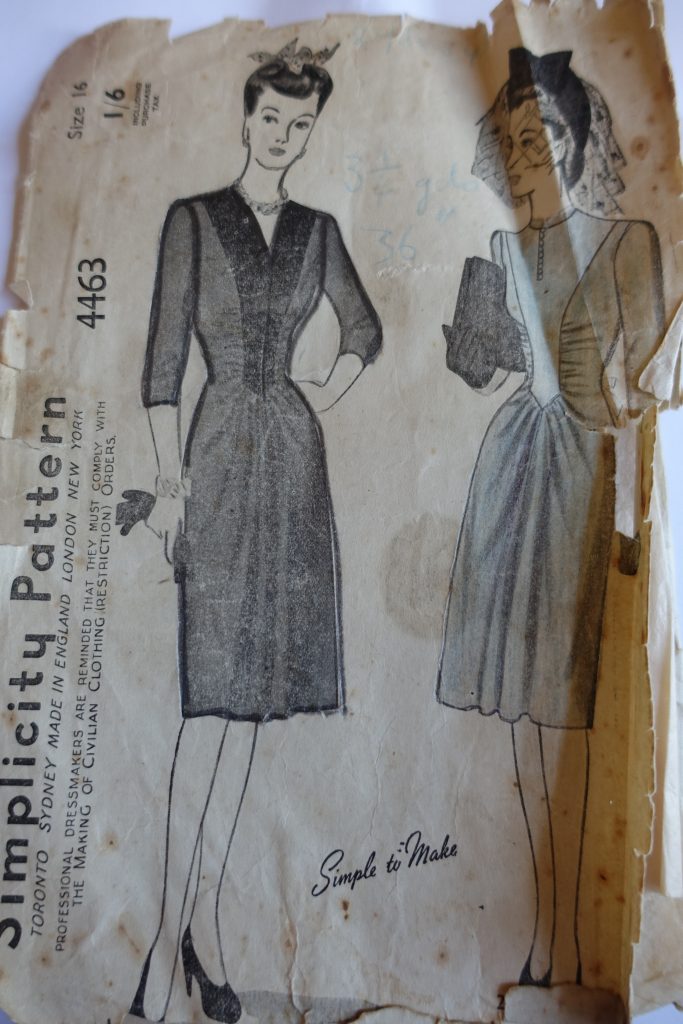
Utility items bought at this time carried the Board of Trade CC41 symbol. CC meant controlled commodity. There were limits on how many buttons or pockets an item of clothing could have, for example. Utility items were sold tax-free.
People were encouraged to repair and remake clothes via pamphlets produced by the Ministry of Information. In addition, women’s magazines of the time also showed you how to cut down adult clothes for children and how to make items from an old mackintosh, including a gas mask case or toilet bag. The article suggested dyeing the mackintosh if it was an uninteresting fawn colour.
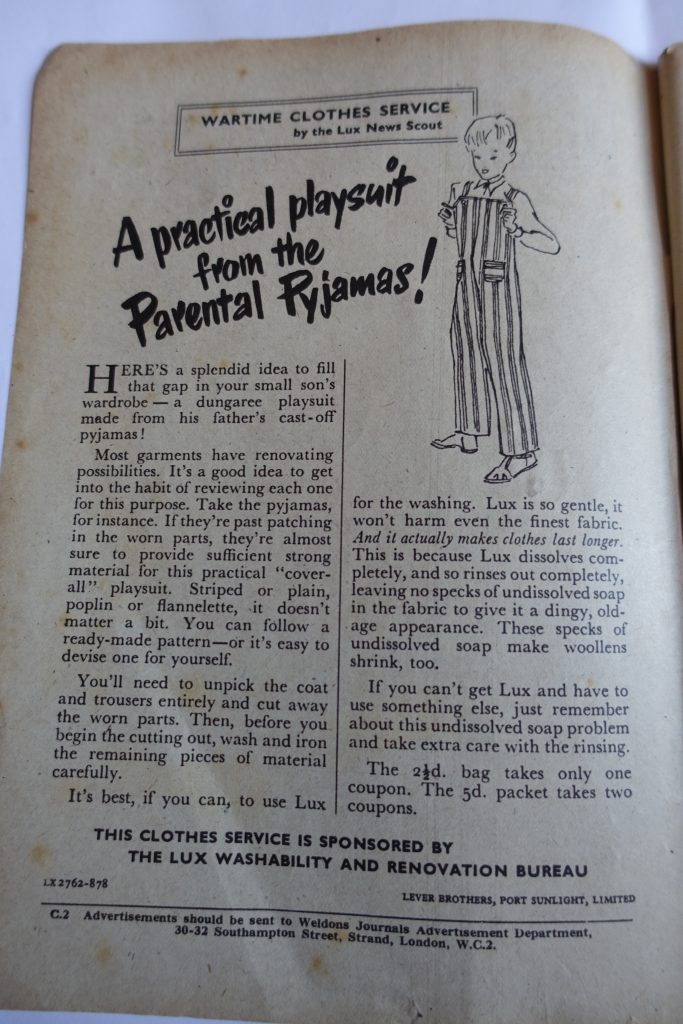

Harrap Bros (Sirdar Wools), Bective Mills, Wakefield advertised in a 1943 women’s magazine that their pattern for a lady’s vest and knickers made with 2ply Shetland wool would be a real boon that winter and would relieve your fuel problem (Sirdar is still in Wakefield – Bective Road and Harrap Street are nearby).

Patterns bought in America during the early part of the war do not show any restrictions on dress length or number of buttons used.
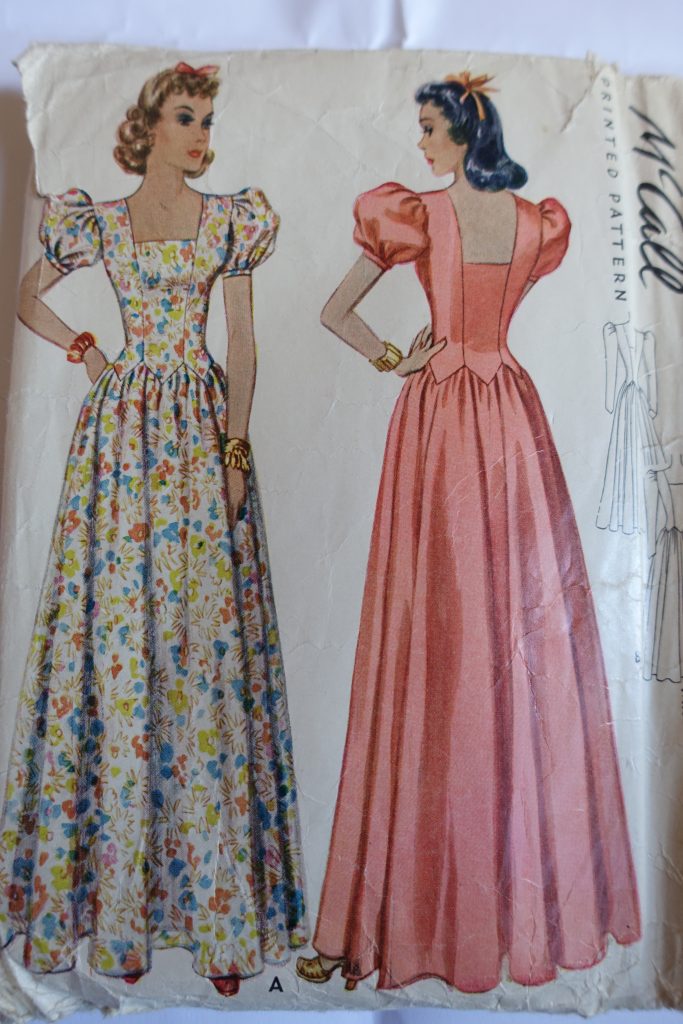
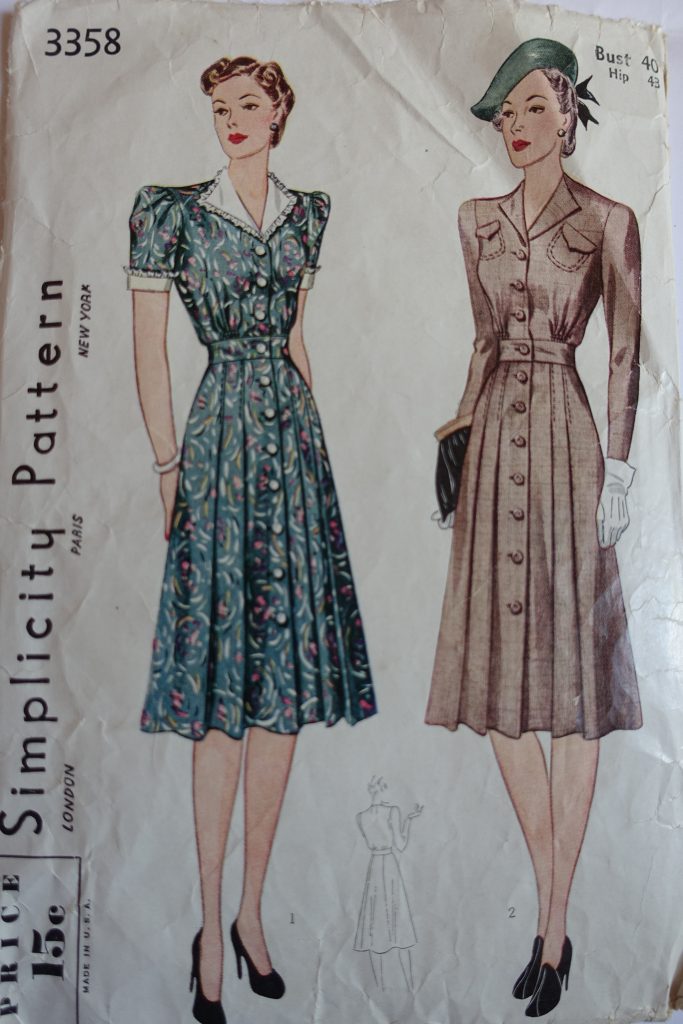

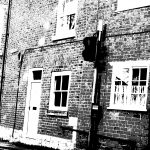





Leave a Reply